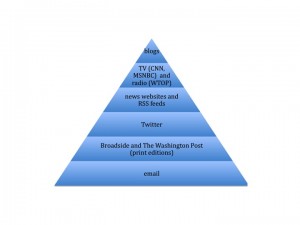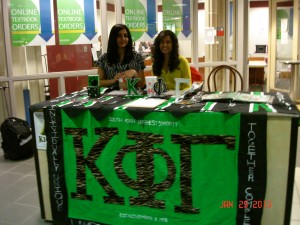If a plane crashes in a city and everyone is around to see it, whom do you ask what happened? Whom do you believe?
I struggled with these questions as I read chapter three of Mark Briggs’s 2013 book “journalismNEXT.”
I don’t know that I have answers to these questions, even now that I have finished the reading. I don’t know that I ever will. I don’t know that right answers to these questions exist or that one answer would be right in every situation.
Here are the things that I do know. (Please note that I am a fallible, unfinished, learning journalist.):
-When I first became a student journalist in 1993 (my freshman year of high school), there were journalists and there were sources. Journalists gathered the news from sources and reported it to readers, viewers and listeners. Sources never expressed much interest in becoming journalists, though they may have occasionally penned letters to the editor.
-This is 2013.
I understand the demands of the 24-hour news cycle and the pressure of looming deadlines. I understand the desire to get the story to the public first, or at least in a timely fashion.
I can’t help but wonder, though, if people won’t wake up one day and want long-form journalism produced by people who do nothing but seek information for them. I wonder if the pendulum won’t swing so far in this direction–the direction that says that everyone can be a journalist–that it swings back the other way.
I think that scenario could happen, but I think it is far more likely that passionate journalists will simply one day look around at each other and find an audience. I think journalists will stop trying to reach everyone and simply start writing and reporting for their peers–people who appreciate the work that goes into good journalism.
If journalists did that, they wouldn’t need to worry about the masses.
Obviously, I have trust issues. I am working on them, I assure you. Like I said, I am a learning journalist.

